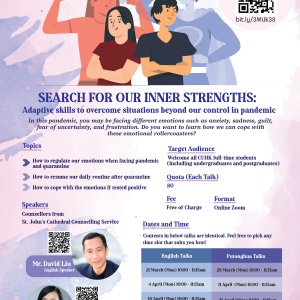Communication is one of the important parts in our lives. Good communication skills not only help us make friends, they can also facilitate our work and daily life. As people come from different walks of life, they present different characters, background, values and cultures. This makes effective interpersonal communication an art form, which is difficult to master.
Communication is an interactive process. Through verbal and non-verbal communication, people can express their emotions, share their thoughts and convey personal messages. We are not born with perfect communication skills. It is only through regular practice, self-reflection and continuous refinement that we can gradually grasp the secrets of this art indeed. In general, communication skills can be divided into two main categories: verbal and non-verbal. Below is an introduction on verbal communication skills.
The 3 Phases of Verbal Communication
Starting a Conversation
Find common interest
Find a common topic and it gives you something to talk about, sort of giving you an excuse for starting a conversation.
Explore areas, which you may have in common with the other party, such as, “You like ABC restaurant? Me too!”
It is better to avoid getting too personal at first. When you have known someone for some time, you can consider sharing personal information and experiences, like “I’ve enrolled for 21 credits this semester. It’s really hard! How about you?”
Observe
Observe how others respond to your small talk so as to consider whether your choice of topic is suitable. Positive signals include they are maintaining good eye contact with you, smiling at you and being at ease with you. On the contrary, if they are telling you that they are busy, have a meeting to attend, or need to rush to other places, these might be negative signals, indicating that they are not so interested in continuing the conversation with you at the moment.
Take the initiative
Appropriate eye contact and a smiling face might make you look friendly and approachable. While quite many of us might find it anxious and fearful to start a conversation, we might try to initiate some small talks first, say sharing about something casual or common interest as discussed above.
Make appropriate enquiry
Elicit information or opinions from the other party by asking more open-ended questions, such as “What…?”, “How…?”. Avoid close-ended questions like, “Yes or no…?”.

Sustaining the Conversation
Trade information
Provide more detailed information if others seem to have interest in your sharing. At the same time, attend to what is being shared by the other party and see if you both have common interests or hobbies, such as:
A: “I had a great day yesterday playing tennis!”
B: “I also like playing tennis. Where do you usually play?”
Listening
It is important to listen during conversations. Listening shows that you are interested in talking with your friend. Otherwise, others might take you do not care about what they have said.
Disclose personal information
Take the initiative to share your experiences, opinions and feelings so as to increase mutual understanding as well as generate new topics for discussion. However, be mindful not to engage in monologue or ignore the feelings and reaction of the other party. Again, please do not get too personal at the beginning as mentioned above.
Change the topic
See if it is a good idea to continue the conversation on the current topic. If the other party shows signs of indifference, or you find yourself having a hard time carrying on the conversation, or there is a lot of silence, it might be a good time to gently move on to a new topic. It might not be a good idea to be argumentative.

Ending the Conversation
Gently saying goodbye and exiting conversations
When it is time to end the conversation or when there are signs that your friend might not seem interested in what you share (see ‘observe’ section above, you can exit the conversation by saying something like, “I have another appointment to attend. Maybe talk some more next time.”
Keep in Touch
When you wrap up your conversation, you can express your desire to maintain further contact with the other party by saying, “message you and let’s catch again sometime later!”
If others show interest in meeting up, you can show your interest for the next meeting, while respecting the personal space, such as “ If you are free later, we may meet for a tennis game sometime?”

The Different Aspects of Communication
Apart from mastering the basic verbal communication skills, we should also pay attention to the nonverbal messages being conveyed during the conversation which include facial expression, gesture, eye contact, tone of voice, body contact, interpersonal space, etc. This will help us go beyond what is being expressed in words. Moreover, cultural, gender and other individual differences may create barriers to communication and lead to misunderstanding. People from Western cultures might seem to be more animated with relatively more body languages; while those from Asian cultures might tend to be more subtle and reserved. Therefore, in the communication process, we should pay extra attention to the background of the other party and acknowledge our differences. This can facilitate more rewarding and satisfying cross-cultural interaction.





